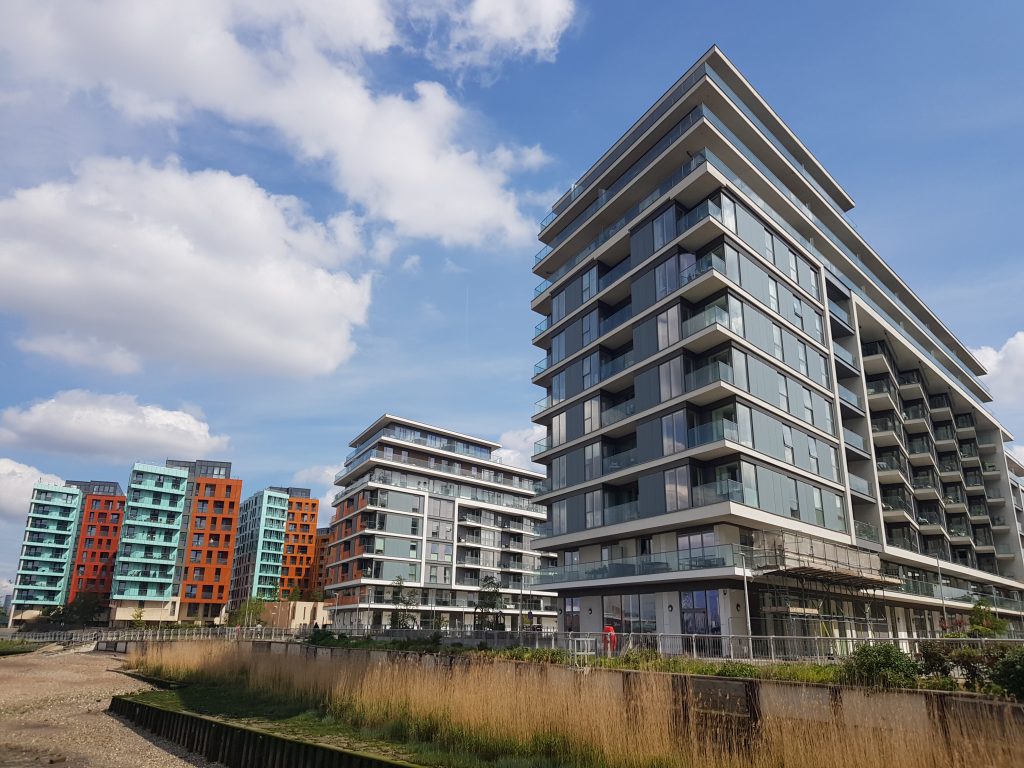Building a rental property portfolio can be an excellent way to achieve financial freedom, create an income stream and secure long-term wealth perhaps for future generations. However, investing in property does require careful planning, a clear strategy and a good understanding of the property investment market. This blog will cover the key considerations, benefits, steps to get started and potential risks involved in building a rental property portfolio.

How To Build A Rental Property Portfolio: Key Considerations
1. Financial Planning and Budgeting
Before diving into property investment, it’s crucial to assess your financial situation. Determine how much capital you can allocate for deposits, refurbishment works (if needed) and related purchasing costs. Consider consulting with a financial advisor to create a detailed budget and financial plan that aligns with your investment goals.
Key costs to factor in:
- Solicitor conveyancing fees and disbursements
- Bridging loan or other finance costs
- Property stamp duty tax (SDLT)
- Sourcing fees / marketing costs
- RICS survey / condition reports
- Limited company set-up fee (if purchasing within a company)
- Lender’s valuation survey and legal fees
- Mortgage arrangement and application fee
- Legal costs associated with lender’s security
- CHAPS transfer costs
- Investor viewing / mileage costs or independent viewing costs
- Accountancy / tax planning advice
- Seller’s legal fee (a common practice in auction purchases)
- Buyer’s premium fee (common practice with online auction purchases)
- New tenancy setup/ rental management costs
- Ongoing property management/maintenance costs
2. Market Research
Researching the property market is vital. Look for areas with high rental demand, economic stability and growth potential. Evaluate factors such as population growth, employment rates, house prices and local amenities. Use tools such as StreetCheck and Hometrack to obtain market data. Local estate agents can also provide valuable insights into market trends and property values.
3. Property Type
Decide on the type of properties you want to invest in, whether single-family homes, multi-unit blocks, Houses of Multiple Occupation (HMO’s) or commercial properties. Each type has its advantages and challenges. For example, multi-unit blocks can provide multiple income streams, while single-family homes might be easier to manage.
4. Financing Options
Explore the various financing options such as conventional mortgages, bridging loans or private investor funding. The use of funds from a SASS or SIPP pension could also be considered. Click here to read our blog about the use of pensions to invest in property. Compare interest rates, terms, early repayment charges and eligibility criteria. Building a good credit score and maintaining a low debt-to-income ratio can help secure better financing terms.
5. Legal and Regulatory Considerations
Understand the legal and regulatory requirements in the area where you plan to invest. This includes landlord-tenant regulations and licensing or planning requirements. Consulting with planning consultants or being a member of a landlord Association such as NRLA can help navigate these complexities and avoid legal pitfalls.
6. Property Management/Maintenance
Decide whether you will manage the properties yourself or use a property management company. Self-management can save costs but requires significant time and effort. Property management companies can handle tenant finding and referencing, maintenance, annual certifications and rent collection, allowing you to focus on expanding your portfolio. It may also be worth exploring the available online platforms that can help systemise and automate the property management process if you were considering self-management.
7. Structure of property portfolio business
Depending on your personal tax situation, you may want to consider owning property in either your personal name or within a Ltd company. When section 24 of the Finance Act 2015 was introduced, this legislation meant that landlords with properties held in their personal name could no longer offset mortgage interest against rental revenues when calculating income tax liabilities. For many, owning property within a Ltd company would be more tax efficient as mortgage interest payments can be treated as an expense therefore giving 100% tax relief against rental income. Speak to your accountant or tax advisor before deciding whether to invest in a personal name or company.

8. Right Insurance
The right insurance cover needs to adequately protect your properties/portfolio including accurate re-build costs. To find out the re-build cost of your property you can use the BCIS website calculator. Shop around for the best policy which should include accidental and malicious tenant damage, buildings insurance, fire/subsidence/water damage and liability cover in case of tenant injury. Rent arrears protection and eviction legal cost cover could be additional protection wanted.
9. Right Tenants
Having the right people in your properties will help protect profits and mitigate risks. Ensure your properties are well maintained, clean and in good condition to attract the best tenants. Always undertake thorough reference and affordability checks to ensure they can afford the rent and if having rented previously, they don’t have a history of missed rent payments. Use the most up-to-date tenancy agreement that abides to current legislation. Depending on whether you are using a lettings agent to find your tenant, you may also want to meet the tenant/interview them prior to them moving in.
10. Additional Streams Of Property Income
Aside from rental income, you may want to consider generating capital via other means of investing in property. This could include flipping or trading properties so that you can reinvest the funds into your portfolio or reduce the portfolio debt, sourcing properties for other investors, converting single family homes to larger HMO’s or joint venturing and co-investing with other, trusted partners.
Now You Know How To Build A Rental Property Portfolio – What Are The Benefits?
1. Income
Rental properties generate an income through monthly rent payments. In 2023/24 ensuring properties were cashflowing was more difficult for some landlord’s due to the increase in mortgage interest rates. Over time however, as rents increase, if your property is well managed and maintained, your cashflow will improve providing a steady stream of income.
2. Appreciation
Property in the UK typically appreciates in value over time. While market fluctuations can occur, well-chosen properties in growing areas can significantly increase in value, contributing to your overall wealth.
3. Tax Benefits
Depending on your personal tax situation, the type of property and whether the property is purchased in a personal name or Ltd company, property investors can take advantage of various tax benefits, including deductions for mortgage interest, ongoing running costs and insurance.
4. Diversification
A rental property portfolio diversifies your overall investment portfolio, thereby reducing risk. Property often performs differently than stocks and bonds, providing risk mitigation against these market volatilities.
5. Leverage
Property allows investors to leverage their investments. By using borrowed capital to finance properties, you can control more assets and potentially increase your returns.
6. Equity Building
As tenants pay down your mortgage and/or the property benefits from capital appreciation, you build up equity within your properties. This equity can be leveraged for future investments or used to improve your properties, further increasing their value and rental income potential.

How to Get Started With Building A Property Portfolio
1. Set Clear Goals
Define your investment goals. Are you looking for immediate cashflow, long-term appreciation, or a combination of both? Setting clear goals will guide your investment strategy and help you make informed decisions.
2. Create a Business Plan
A detailed business plan outlines your investment strategy, target markets, financing options, and growth plans. It serves as a roadmap, helping you stay focused and organised as you build your portfolio.
3. Save for Deposits
Saving for deposits is a critical step. Aim to save at least 30% of the property’s purchase price to cover the deposit and purchasing costs and to secure better financing terms. Consistent saving and smart budgeting can help you reach this goal. Alternatively you could joint venture with other parties who have the funds available to cover these costs.
4. Build a Team
Assemble a team of professionals, including an estate agent, mortgage broker, solicitor, build team and contractors, planning consultant and accountant. A knowledgeable and experienced team can provide valuable advice, streamline transactions and help you navigate the complexities of property investment.
5. Start Small
Begin with a small, manageable property. This allows you to gain experience, understand the rental market, and develop your management skills without taking on too much risk. Many start with single-family homes before moving onto larger projects.
6. Conduct Thorough Due Diligence
Before purchasing any property, conduct thorough due diligence. Inspect the property, complete deal analysis to understand its potential for rental income and appreciation and obtain quotes for any works needed. Verify the property’s title and any covenants or planning restrictions.
7. Secure Financing
Work with your mortgage broker to secure financing. Compare loan options, interest rates and terms. It’s ideal to have the finance agreed in principle before making offers as this demonstrates your seriousness to sellers.
8. Make an Offer
Once you find a suitable property make a competitive offer that works for you based on the analysis carried out. Work with your estate agent to negotiate terms and contingencies or offer direct to the vendor if no agent was involved in the marketing of the property.
9. Close the Deal
After your offer is accepted, proceed with the conveyancing process. This involves finalising your financing, completing the necessary legal paperwork, and potentially conducting a final inspection of the property to go through the schedule of works in more detail.
10. Complete Refurbishment Works
If the property requires any work doing to it prior to renting it out, ensure you use contractors that have experience with the type of project they’ll be working on, come recommended or you already have an existing relationship with.
11. Manage the Property
If managing the property yourself, develop a system for referencing tenants, collecting rent and handling maintenance requests. If using a property management company, ensure they have a good track record and clear communication channels.
12. Focus On One Property Type to Begin With
By focusing on only one type of property to begin with, you can systemise the entire purchasing and refurbishment process which enables you to do more property projects, quicker. You will gain a more in-depth knowledge of your chosen investment strategy, your area and the types of property you’re investing in. Once you’re experienced with this property type, you could then start to look at introducing a second type of property to begin investing in.

Expanding Your Property Portfolio
1. Reinvest Profits
Use the profits from your rental income to reinvest in additional properties. This compounding effect can accelerate the growth of your portfolio and increase your overall returns.
2. Leverage Equity
Leverage the equity in your existing properties to finance new investments. Bridging loans can be secured against equity in properties you currently own for example. If you refinance a property and release the equity, this can provide the capital needed to expand your portfolio without depleting your savings.
3. Diversify Locations
Consider diversifying your investments across different locations to spread risk and take advantage of various market conditions. Investing in multiple cities or areas can provide exposure to different economic drivers and reduce dependency on a single market.
4. Scale Up
As you gain experience and confidence, consider scaling up to larger properties, such as multi-unit blocks, HMO’s or commercial properties. These can offer higher returns and increased cash flow but require more capital and advanced management skills.
Risks In Building A Property Portfolio and How to Mitigate Them
1. Market Fluctuations
Although property in the UK generally increases over time, property markets can fluctuate due to economic conditions, interest rates, political changes and local factors. To mitigate this risk, consider investing in different locations and/or property types or tenant types and maintain a long-term perspective.
2. Tenancy Voids
High void rates can impact cashflow and profitability. Mitigate this risk by investing in high-demand areas ideally with future regeneration plans. This will help maintain good rental rates. Always provide quality properties that attract and retain tenants.
3. Property Damage
Property damage from tenants, natural disasters or accidents can lead to significant expenses. Mitigate this risk by conducting thorough tenant referencing, obtaining security deposits and maintaining adequate insurance coverage.
4. Legal Issues
Legal issues such as tenant disputes and compliance with regulations can cause legal issues. Mitigate this risk by staying informed about landlord-tenant regulation, having a good network and team around you and using current tenancy agreements. Membership to a Landlord’s Association provides access to advice and support.
5. Financial Risk
Over-leveraging or poor financial management can lead to financial difficulties. Mitigate this risk by maintaining a healthy cash reserve, avoiding excessive debt and work with an accountant to provide financial and tax advice.
6. Management Challenges
Managing multiple properties can be time-consuming and complex. Mitigate this risk by hiring a reputable property management company or developing efficient systems or processes for self-management.

FAQs For Building a Rental Property Portfolio in the UK
1. How do I finance my first rental property in the UK?
Financing your first rental property in the UK can be achieved through several methods:
- Buy-to-Let Mortgages: These are specifically designed for rental properties and typically require a larger deposit (around 25% of the purchase price) and ave ha higher interest rate than residential homeowner mortgages. Lenders also assess rental income potential to ensure it covers the mortgage payments.
- Residential Mortgages: If you initially intend to live in the property, you can apply for a standard residential mortgage and later convert it to a buy-to-let mortgage. Be aware of the terms and conditions of your current mortgage before doing so.
- Bridging Loans: Short-term loans that can be used to purchase properties quickly, ideal for property flips or auction purchases. These have higher interest rates and shorter repayment periods.
- Remortgaging: If you own a home with significant equity, you can remortgage it to release funds for the deposit or purchase of a rental property.
- Government Schemes: Various schemes, such as Help to Buy, can assist with purchasing properties, although these are generally aimed at first-time buyers and may not be suitable for buy-to-let investments.
2. What should I look for when buying a rental property?
When buying a rental property in the UK, consider the following factors:
- Location: Choose areas with strong rental demand, good schools, low crime rates, and proximity to amenities such as shopping centres, public transport and employment hubs.
- Property Condition: Ensure the property is in good condition or if not, can be improved within the budget you have available. Consider the age and state of major systems like plumbing, heating and electrics and what the costs to replace those could be.
- Rental Yield: Calculate the expected rental income and ensure it covers all expenses, including mortgage payments, voids, insurance, maintenance and management fees.
- Appreciation Potential: Look for areas with potential for property value appreciation over time such as new transport links or town centre regeneration.
- Tenant Demographics: Understand the type of tenants the area attracts (families, students, young professionals) and ensure the property meets their needs.
3. How do I manage my rental properties effectively?
Effective property management is crucial for maintaining your rental properties and ensuring steady cashflow.
- Tenant Referencing: Conduct thorough background checks, including credit history, employment verification and rental history to select reliable tenants.
- Tenancy Agreements: Use clear, up-to-date tenancy agreements that outline the terms and conditions of the tenancy, including rent amount, due dates, maintenance responsibilities and tenancy duration.
- Maintenance: Regularly inspect and maintain the property to prevent major issues and keep tenants satisfied. Promptly address repair requests and ensure the property meets compliance and safety standards.
- Rent Collection: Establish a consistent rent collection process, including late fees for missed payments. Use online payment systems for convenience and record-keeping.
- Communication: Maintain open and professional communication with tenants. Respond promptly to their concerns and foster a positive landlord-tenant relationship.
- Property Management Company: If managing properties yourself becomes overwhelming, consider hiring a reputable property management company to handle day-to-day operations. Alternatively you can joint venture with another partner or investment company who will manage the day-to-day running of your portfolio, offering you a more hands-free investment option.
5. How can I maximise rental yields of my properties in the UK?
Maximising rental yields involves several strategies:
- Renovations and Upgrades: Improve the property’s appeal by updating kitchens, bathrooms and living spaces. Modern, well-maintained properties can command higher rents.
- Furnished vs. Unfurnished: Consider offering furnished properties, particularly in student or professional letting markets, as this can attract higher rents. But always check what level of furnishing your target tenants are looking for.
- Energy Efficiency: Improve the property’s energy efficiency. Properties with good Energy Performance Certificate (EPC) ratings can justify higher rents and appeal to environmentally conscious tenants.
- Regular Rent Reviews: Conduct regular rent reviews and adjust rental rates in line with market conditions. Ensure you are charging competitive rates without pricing yourself out of the market.
- Additional Services: Offer additional services such as inclusive utility bills, high-speed internet, or cleaning services, particularly in HMO’s, which can justify higher rental rates and attract premium tenants.
Building a rental property portfolio requires careful planning, strategic investment, diligent management and a long-term perspective. By understanding the key considerations, benefits, and potential risks, you can make informed decisions and create a successful property investment portfolio. Whether you’re a beginner or an experienced investor, following these steps and best practices can help you achieve your financial goals quicker and build long-term wealth through property investment.
At Amplus Properties Limited we provide client focused and inspiring housing within the supported housing and Co-Living sector to help address the shortage of suitable accommodation that’s available.
We work with busy professionals and business owners who would like to achieve hands-free returns on their capital. We typically work with investors who share our aim of wanting to make quality housing available to all and who would like to share in the profits we create through design-led property investments.
By investing in property opportunities in the South East of London and Kent areas, we help our investors to grow their capital and achieve their own financial goals quicker.
Please get in touch – we’d love to hear from you.
